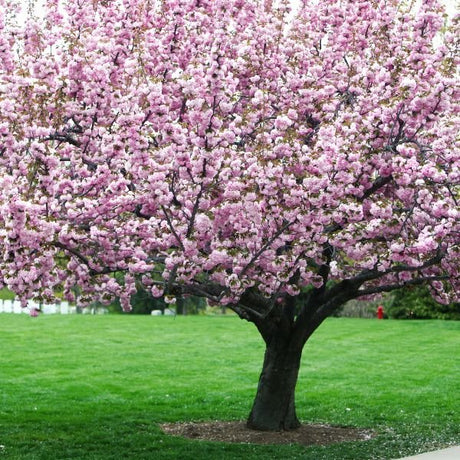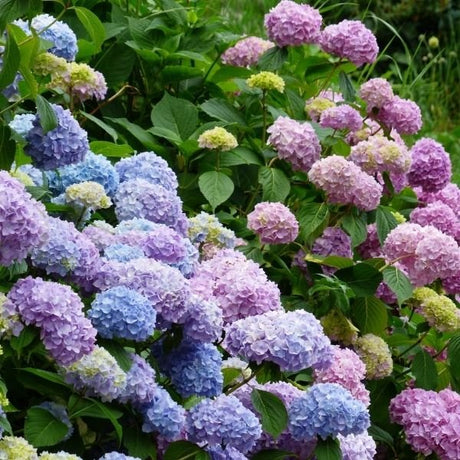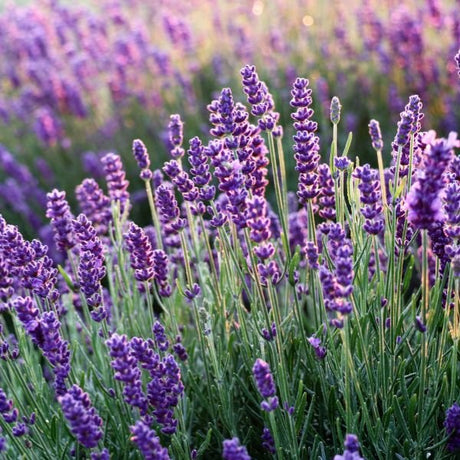Kishu Mandarin Tree
- Stay Protected with Plant Sentry ™
Kishu Mandarin Tree - #5 Container Semi Dwarf is backordered and will ship as soon as it is back in stock.
Plant Sentry™
Plant Sentry™
Plant Sentry is designed to protect both consumers and the nursery trade from invasive plant pests and diseases. Sites that display the Plant Sentry protection badge are protected from consumers buying and nurseries shipping material carrying invasive pests and diseases.
This proprietary eCommerce software prevents the shipment of a restricted plant to each state. The Plant Sentry system includes a shipment certification program. The Plant Sentry Compliance Officer works closely with NatureHills.com and each nursery or fulfillment center to ensure only compliant plants are sold to customers.
Click Here to learn more

Delivery and Shipping
Delivery and Shipping
Shipping
To obtain a more accurate shipment time-frame, simply enter your zip code in the “Find Your Growing Zone” box to the right. Our plants are grown all over the country and lead time on items may be different because of this. Once your order is placed, you will also receive the specific shipment time-frame information as part of your order confirmation. Once an item ships, you will receive shipment notification and tracking numbers, so you can follow along while your plant travels to your doorstep. We use FedEx, UPS, or USPS at our discretion.
Due to winter weather we have put a hold on shipping to the areas shown below in grey. You can still order now and we will ship the plant to you during an appropriate time for your zone.
Standard Shipping Rates
At Nature Hills we handle, package and ship the products you order with the utmost care to ensure healthy delivery. Shipping and handling charges are calculated based on the tables below. Please note that some items include an additional handling surcharge, these will be noted on the item's product page.
| From | To | S&H |
|---|---|---|
| $0 | $19.99 | $24.99 |
| $20 | $49.99 | $29.99 |
| $50 | $69.99 | $34.99 |
| $70 | $99.99 | $39.99 |
| $100 | $129.99 | $44.99 |
| $130 | $149.99 | $48.99 |
| $150 | $150+ | Approx 28% |
Click here to see our full rates
Buying Options for Plants
Nature Hills sells a large variety of plants with several options available. Plants are offered in both potted containers and as dormant bare root without soil. Here is a helpful resource to understand your options as you create a beautiful landscape with help from Nature Hills.
Ever wonder what a larger plant will mean for your landscape? Container Sizes are really all about the age of the plant!
Seasonally, Nature Hills offers hand selected, high quality bare root trees, shrubs and perennials. Bare root plants are sold by height from the top of the root system to the top of the plant. Plants may be taller than the height minimums.
- Popular sizes of select trees are 1 foot, 2 feet, 3 feet, etc.
- Popular sizes of select bare root plants is 1 foot, 18 inches, etc.
Nature Hills Container Size by Volume
Keep in mind, specific varieties and different growing conditions can affect the rate at which plants grow. Variations in size may occur.
| Young Plants to 18 Months | ||
|---|---|---|
| Size | Volume | |
| 2"x2"x3" | Ranges from | .18 to .21 dry quarts / .198 to .23 dry liters in volume |
| 4.5" Container | Equal to | .65 dry quart / .72 dry liter in volume |
| Sprinter Pot | Equal to | .63 dry quart / .69 dry liter in volume |
| 4" Container | Ranges from | .31 to .87 / .35 to .96 dry liter in volume |
| 6" Container | Equal to | 1.4 dry quarts / 1.59 dry liters in volume |
| 1 Quart | Equal to | 1 dry quart / 1.1 dry liter in volume |
| 5.5" Container | Equal to | 1.89 of a dry quart / 2.08 dry liters in volume |
| 4"x4"x5" | Ranges from | .8 to 1.1 dry quarts / .88 to 1.2 dry liters in volume |
| 4"x4"x6" | Ranges from | 1.0 to 1.3 dry quarts / 1.1 to 1.41 dry liters in volume |
| 4"x4"x9" | Ranges from | 1.1 to 2.1 dry quarts / 1.2 to 2.3 dry liters in volume |
| 4"x4"x10" | Ranges from | 1.7 to 2.3 dry quart / 1.87 to 2.53 dry liters in volume |
| Plants 18 Months - 2.5 Years Old | ||
|---|---|---|
| Size | Volume | |
| 2 Quart | Equal to | 2 dry quarts / 2.2 dry liters in volume |
| #1 Container | Ranges from | 2.26 to 3.73 dry quarts / 2.49 to 4.11 dry liters in volume |
| 5"x5"x12" | Equal to | 3.5 to 4.3 dry quarts / 3.85 to 4.74 dry liters in volume |
| Plants 2 - 4 Years Old | ||
|---|---|---|
| Size | Volume | |
| #2 Container | Ranges from | 1.19 to 1.76 dry gallons / 5.24 to 7.75 dry liters in volume |
| #3 Container | Ranges from | 2.32 to 2.76 dry gallons / 10.22 to 12.16 dry liters in volume |
| Plants 3 - 5 Years Old | ||
|---|---|---|
| Size | Volume | |
| #5 Container | Ranges from | 2.92 to 4.62 dry gallons / 12.86 to 20.35 dry liters in volume |
| #6 Container | Ranges from | 5.25 to 6.01 dry gallons / 23.12 to 26.42 dry liters in volume |
| #7 Container | Ranges from | 5.98 to 6.08 dry gallons / 26.34 to 26.78 dry liters in volume |
Plant Highlights
Kishu Mandarin Tree highlights at a glance!
Plant Highlights
Plant Highlights
-
Brand
-
Botanical Name
-
Growing Zones
-
Mature Height
-
Mature Spread
-
Sun ExposureFull Sun
-
Moisture
-
Soil
-
Growth RateMedium
-
Flower Color
-
Pollinator Friendly
-
Pollinator Required
-
Fragrant
-
Pruning Time
-
Bloom PeriodLate Spring
-
Harvest Time

Growing Zones outdoors 9-10; patio 4-10
The most delicious Mandarin you'll ever taste! Adorable and irresistible, the Kishu Seedless Mandarin (Citrus kinokuni mukakukishu) is one of the most delicious of all the Mandarins. The fruit is smaller than a golf ball but super easy to peel, tender and juicy on the tongue, and fragrant and sweet to the nose.
All of these qualities make for a fantastic homegrown fruit, but a difficult one to grow commercially. Until recently it was a challenge to find - even at farmer's markets - but the fruits are becoming more readily available, thanks to small groves of Citrus tree growers.
From the glossy bright green foliage that remains year-round, to the drifts of fragrant white blossoms, you’ll always have something to enjoy on your Kishu! However, it will turn the most heads once it's dripping in darling bright orange orbs just begging to be savored!
Planting and Application:
Thankfully you don't have to wait until this delicious fruit comes to your local market - you can grow your own today! If you live in a Citrus-friendly area, or even if you have a large pot and a sunny window, you can grow this delightful fruit for yourself.
Indoors or out, porch, patio or balcony, anyone in cooler climates can also enjoy these smaller, more compact ornamental trees! In warm climates, the Kishu Mandarin Tree thrives as a front or back yard specimen tree and small edible ornamental!
- Exceptional Flavor
- Early Ripening
- Small, Easily Peeled Fruit
- Ornamental Flowering Broadleaf Evergreen
- Container Tree - Grow Indoors or Out!
- Easy to Grow & Healthy Vitamin C-Packed Treat
#ProPlantTips for Care:
Citrus trees do their best fruiting and flowering in the full sun, so provide at least 6 hours of direct sunlight a day for your tree or risk your harvest's size. Citrus also prefer to dry out a bit between waterings, so plant in enriched, slightly acidic, organic soil that's well-drained.
Protecting Container Citrus From Cold
Although it's famous for growing in warmer regions, it can also thrive in colder areas as long as the tree is brought indoors prior to the first frost of winter.
If you're growing these tropical trees in the ground in the lowest of their favored growing zones, they need to be planted in a sheltered spot to avoid the worst of the chill. If a spot like that is unavailable, then you are better off planting in a large, deep container.
In borderline growing zones, begin slowly acclimating your tree indoors or into a protected location, eventually moving your tree inside in bright indirect sun for the winter if the temperatures in your area ever dip below that 40°F range. In spring, reverse this process and begin acclimating your tree to again be back out in the full sun all summer. This reduces stress and leaf drop.
- Full sun and enriched sites
- Use a regular fertilizer schedule
- Prune to any manageable size &
- Head over to our Garden Blog for Caring for Your Citrus Trees
- Find more great info about the Kishu Mandarin Tree in our Video Blog too!
Any gardener will tell you that the fruit you grow yourself is better than the fruit you buy at the store. They also tell you that fruit that you grow that isn't available in the market tastes even better! You'll be an instant hit with your neighbors and at your local farmer's market, but only if you order your Kishu Seedless Mandarin Tree today at NatureHills.com!
Kishu Mandarin Loved for Two Thousand Years
The Kishu Mandarin is a small Citrus fruit with an enormous history. Packed with flavor and convenience, the fruit has lasted as a favorite of both the Chinese and the Japanese for almost two thousand years.
Known by a variety of different names, the Kishu first is described during the Tang dynasty around (618 to 907 AD). Then called the Ruju, the fruit is a seeded selection with outstanding flavor; by the era of the Song dynasty (960 to 1279) it is hailed as one of the finest of Mandarins. DNA has shown the modern-day Kishu and the Ruju, or Nanfengmiju as it is referred to today, to be very similar. It is currently one of the most widely grown Mandarins in China.
Arriving in Japan around 700 years ago, the Cherry Orange as it was called, began to be cultivated and was soon referred to as the Japanese Orange. By the 16th century, the Kishu domain, a location in the southern part of Japan, was the prime region for the Japanese Orange and most likely the origin of the varieties name. Kishu is said to be one of the most popular citrus varieties in Japan until the 1880's, with the introduction of the Satsuma Mandarin. At this time, at least 4 varieties of Kishus are known, with 4 being seeded and 1 being seedless.
It wasn't until the early 1900s that seeds began to arrive in the United States. The Mukaku Kishu seeds, a highly prized, low-seeded, Japanese selection, were brought to California in 1915. Once fruited, it is determined that the fruit is too small and not suited for commercial cultivation. There are recommendations made that the variety is suited for home gardens as early as 1902, but the Kishu Mandarin would not be looked at again until the 1990s.
In the early 1980s, bud wood for the Seedless Kishu arrived at UC Riverside's Citrus Variety Collection. Once fruited the selection fast becomes a favorite of the UC Riverside Staff. The fine flavor, the ease of peeling and the small snack-size fruit were all exciting features to the UC Staff. The fact that it was earlier than the most popular Satsuma Mandarin only added to its potential.
Finally, in 1987, a commercial grower in Ojai, California planted the first seedless Kishu orchard. The fruit was an immediate hit at farmer's markets. The demand grows quickly, attracting 5 or more growers to plant as well. In the late 1990s, the Four Winds Growers of Fremont, California began offering the low-seeded Kishu to the home garden market. The variety is slow to catch on at first, but with the help of commercial exposure, demand begins to grow.
Today, the low Seeded and Seedless varieties are both offered, with some preferring the seeded claiming a more intense flavor. In either case, the Kishu Mandarin is now a much-appreciated, early-season fruit, and will continue to grow in popularity based on the attributes that have made it popular for the last two thousand years.











